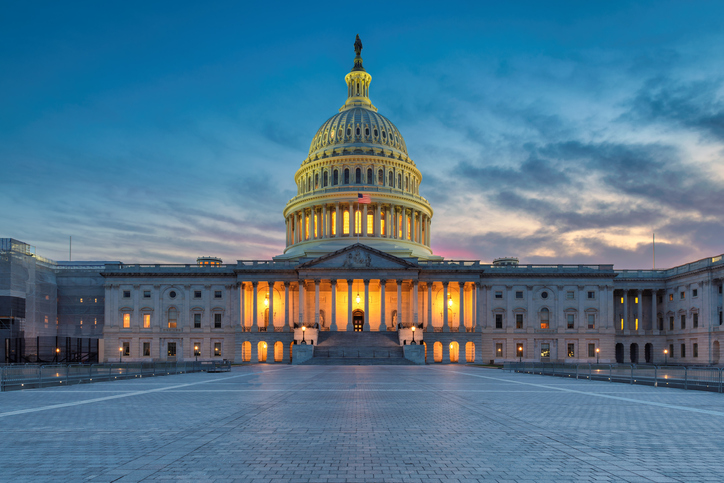
President Trump is all set to deliver another speech to Congress.
The Super Bowl is over. The Iowa caucuses are too – I think? Looks like a real mess out there. Anyway, it’s time for America to move on … to the State of the Union!
The State of the Union is here! President Trump will deliver this big, annual political speech tonight. Will he talk about expanding travel bans? His almost certain acquittal in the almost-over Senate impeachment trial? Or will he again congratulate the Kansas City Chiefs of Kansas City, Kansas?
Who knows! Here are five topics the Alliance for American Manufacturing (AAM) will be watching for when the president delivers his State of the Union address:
1. China
The president recently signed a “Phase 1” trade deal with the Chinese government after approximately 18 months of an escalating tariff fight. While this president is widely known for his humility, he’s almost certainly gonna talk about how great this deal is … even though it’s less of a deal than a truce.
Phase 1 staves off planned U.S. tariff increases, includes promises from China to buy more American goods, and opens up the Chinese market for … the sale of American financial products, which isn’t exactly what Trump promised when he campaigned in 2016 on getting tough with China. We really hope the administration is working on a Phase 2 deal that will actually help American workers who have been absolutely clobbered by unfairly traded Chinese imports. In the meantime, hooray for American bankers!
Trump tells JP Morgan Chase CEO Mary Erdoes to say "thank you, Mr President" for their most recent earnings report and adds that his administration "made a lot of bankers look very good." pic.twitter.com/iRUY8eHttl
— Oliver Willis (@owillis) January 15, 2020
2. USMCA
I’ve heard it pronounced “usk muh” and “yu smacka” – but the United States-Canada-Mexico-Agreement is basically NAFTA 2.0, which I think is easier to say. Here’s a big thing to note about this renegotiated trade deal: it only gained congressional approval because the Trump administration – with United States Trade Representative Robert Lighthizer at the helm – worked with House Democrats to make changes friendly to American workers. After those changes were made this deal got the support of many labor unions, who haven’t supported a Washington-negotiated trade deal in years. That’s pretty notable.
The president didn’t invite any Democrats to the USMCA signing ceremony because of course he didn’t, but hey: Bipartisanship isn’t dead!
3. Jobs
When we say jobs, we mean manufacturing jobs. The creation of jobs in the manufacturing sector, all of the president’s rhetoric aside, has only slowly picked up since he took office in January 2017. It’s moved at a slightly faster clip than it did during last four years of the Obama administration, but not by much … and the rate really slowed down in 2019. In fact, 12,000 workers in the manufacturing sector lost their jobs last December. The numbers don’t lie: The Trump economy hasn’t been great for factory workers.
But hey, you know what would create factory jobs by pumping money into U.S. manufacturing?
4. Infrastructure
This is a story you’ve heard a lot if you’re a regular reader of the AAM blog: American infrastructure is in terrible shape, we’ve known about this for years, and yet no one in Washington seems to be honestly interested in spending the huge sums of money needed to fix it. If the president does mention infrastructure investment, it’s almost certainly an applause line that won't be taken seriously!
I bet he’ll talk about this, though:
5. Apprenticeships
The president signed an executive order in 2017 that was meant to give businesses groups more oversight over apprenticeship programs, but it took his Department of Labor (DOL) three years to propose an appropriate set of rules to do this. Looks like the rubber has finally hit the road: DOL just proposed a program that would create a private sector-driven structure to run separately from the registered apprenticeship system the federal government has had in place for 80 years. It’s kinda confusing! And has been criticized as “a giveaway to private corporations and for-profit colleges!” And now the administration will have to get funding from Congress so the initiative can get off the ground.
AAM prefers legislation put forward by Rep. Mark Pocan (D-Wis.) that would establish national standards for the federal program that already exists. But if President Trump talks about workforce training, he’s gonna talk about this new one his administration has cooked up.
